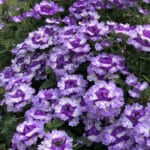Want to brighten your holidays with gorgeous, healthy Christmas plants? This guide is your secret weapon! We’ll cover everything from picking the perfect plant for your home to keeping it happy and vibrant, even after the holidays are over. We’ll explore popular choices like poinsettias and amaryllis, plus a few lesser-known beauties, giving you simple, easy-to-follow tips for success. Whether you’re a green thumb or just starting out, we’ll help you confidently choose, care for, and maybe even grow your own festive plants!
Christmas Flower Plants: A Guide to Festive Blooms and Holiday Cheer
Bring the festive spirit indoors with beautiful, blooming plants! This guide helps you choose and care for festive flowers, ensuring a merry and bright holiday season for you and your plants. We’ll cover popular choices and some unique options, whether you’re a seasoned gardener or just starting with festive blooms.
Popular Choices for Your Holiday Display and Festive Ambiance
Let’s explore the most popular Christmas plants, each with its own charm and care requirements, enhancing your festive ambiance.
Poinsettias: The Holiday Classic for Christmas Decor
These iconic plants, with their brilliantly colored bracts (often red, but also pink, white, and even marbled!), are synonymous with Christmas, serving as quintessential Christmas decor. They add a burst of vibrant color to any room. Picture them sitting pretty on a sunny windowsill—but not too sunny! Direct sunlight can actually burn their leaves. Think bright, indirect light for best results. Water your poinsettia only when the top inch or so of soil feels dry to the touch. Avoid letting the soil become completely soggy; this can lead to root rot. Well-draining potting mix is essential. A slightly cooler environment, around 65-70°F (18-21°C), suits them perfectly. A light feeding with a balanced liquid fertilizer during their blooming time helps keep them vibrant. While many people treat them as temporary decorations, with the right care, you might even be able to coax your poinsettia to bloom again next year! It takes some effort, but the reward is well worth it.
Amaryllis: Dramatic Christmas Blooms for a Festive Statement
With their stunning, trumpet-shaped flowers, amaryllis are real showstoppers, providing dramatic Christmas blooms. These beauties add an elegant touch to your holiday decor. They need a bright spot, ideally with indirect sunlight. Well-draining soil is crucial to prevent root rot. Water them thoroughly but only when the soil has dried out slightly between waterings. A slightly warmer environment, 65-75°F (18-24°C), encourages those magnificent blooms. Regular feeding with a balanced liquid fertilizer throughout their growing season will help them reach their full potential. Once the flowering is finished, reducing watering encourages dormancy, which is vital for successful reblooming the next year! This period of rest allows the bulb to recharge and prepare for future flowers.
Christmas Cactus: A Succulent Surprise for the Holidays
The Christmas cactus (Schlumbergera buckleyi) offers an unexpected twist on traditional holiday flora. This easy-to-care-for succulent bursts into bloom, typically displaying vibrant pink or red flowers during the holiday season. Unlike desert cacti, the Christmas cactus thrives in humid environments and prefers indirect light. Water when the top inch of soil feels dry, and ensure good drainage. With proper care, a Christmas cactus can live and bloom for many years, becoming a cherished part of your holiday traditions.
Cyclamen: Delicate Beauty in a Winter Wonderland Setting
These charming plants feature delicate, heart-shaped flowers in a delightful range of colors, presenting a delicate beauty, best kept in a winter wonderland setting. To enjoy their beauty, it’s best to keep them in a cooler environment, around 55-65°F (13-18°C). Bright, indirect sunlight is perfect; avoid direct sunlight. Water consistently, keeping the soil evenly moist, but never waterlogged. Well-draining soil is important to avoid root problems. A slightly acidic soil pH is ideal. Light fertilizing every couple of weeks during their blooming phase keeps them healthy. Considered rather finicky by some, cyclamen don’t much care for warmth or dryness, so keep a watchful eye!
Less Common, Yet Equally Festive Plants for Your Home
While poinsettias, amaryllis, and cyclamen are popular choices, there are other plants that can add a unique festive touch to your home.
Norfolk Island Pine: A Miniature Evergreen Holiday Tree Alternative
This evergreen miniature tree offers a different kind of festive flair—a little slice of Christmas tree magic indoors, used as a miniature evergreen holiday tree alternative! It thrives in bright, indirect light and appreciates consistently moist (but not soggy) soil. Maintain a moderate room temperature and avoid big temperature swings. To keep your Norfolk Island pine happy indoors, provide consistent humidity, as dry indoor air can cause the needles to turn brown. Regular misting or a humidifier can help.
Rosemary Topiary: Fragrant and Festive
Rosemary topiaries, shaped to resemble miniature Christmas trees, bring a delightful fragrance and a touch of greenery to your holiday decor. These aromatic plants prefer bright light and well-drained soil. Allow the soil to dry out slightly between waterings to prevent root rot. Rosemary is also edible; feel free to snip off a few sprigs for your holiday cooking.
Helleborus (Christmas Rose): Blooming in the Winter Garden
Despite its name, Helleborus niger, or the Christmas rose, is not a rose but a member of the buttercup family. This winter-blooming perennial produces delicate white or pink flowers, adding beauty to the landscape even in the coldest months. It prefers partial shade and well-drained soil. Hellebores are relatively low-maintenance and deer-resistant, making them a great addition to your winter garden.
Paperwhites: Fragrant Blooms for the Holidays
Paperwhites (Narcissus papyraceus) are known for their delicate, fragrant white flowers that bloom indoors during the winter months. These bulbs can be easily forced in water or soil, making them a popular choice for holiday displays. Simply place the bulbs in a shallow dish filled with pebbles and water, ensuring that the base of the bulbs is submerged. Keep the dish in a cool, bright location, and watch as the paperwhites sprout and bloom.
Mistletoe: A Festive Tradition (Though Not a Potted Plant)
Although not technically a plant you cultivate in a pot, mistletoe holds a significant place in holiday traditions. Remember to always practice responsible harvesting of mistletoe, respecting the host tree and surrounding ecosystem. It’s a fascinating parasitic plant dependent on a host tree for survival. Mistletoe is often hung indoors during the holidays, symbolizing love and goodwill.
Choosing the Right Christmas Flower Plant for Your Holiday Home
Selecting the perfect festive plant depends heavily on your living space, plant care experience and lifestyle. Consider these factors:
- Light Levels: Do you have a sunny south-facing window, or a dimly lit corner? Different plants thrive in different light conditions.
- Watering Habits: Are you a diligent waterer, or do you tend to forget? Some plants need more frequent watering than others.
- Temperature: Do you keep your home cool or warm with balanced festive indoor temperatures? Certain plants prefer cooler temperatures, while others are happy in warmer environments.
- Longevity: Do you want a plant that lasts beyond the holidays, or is it simply a temporary festive decoration for the christmas season?
- Pet Safety: Some popular Christmas plants, such as poinsettias and mistletoe, are toxic to pets. If you have furry friends, choose pet-safe options like Christmas cactus or rosemary.
Care Tips for Longer-Lasting Holiday Cheer and Plant Health
To maximize your plants’ beauty and longevity, here are some helpful tips:
- Watering Wisely: Always check the soil moisture before watering. Overwatering is the most common problem, leading to wilting and root rot. Let the top inch or so of soil dry out between waterings for optimal plant health.
- Feeding Your Plants: Fertilize sparingly, following the instructions on your chosen fertilizer. Too much fertilizer can damage the roots.
- Temperature Control: Keep your plants away from drafts and heating vents, which can cause sudden temperature changes.
- Sunlight Management: Avoid direct sunlight, which can scorch delicate leaves.
- Humidity: Many indoor holiday plants prefer higher humidity levels. If your home is dry, consider using a humidifier or placing plants on a tray filled with pebbles and water.
- Pruning and Deadheading: Remove any dead or yellowing leaves and spent flowers to encourage new growth and maintain a tidy appearance.
By following these simple guidelines, you can enjoy the beauty of your Christmas flowers throughout the holiday season and perhaps even beyond! Remember, a little research and careful attention go a long way in creating a festive, plant-filled winter wonderland.
How to Make Christmas Poinsettias Rebloom Next Year After the Holidays
Key Takeaways:
- Reblooming poinsettias is achievable with consistent effort, offering a sustainable alternative to yearly purchases.
- Precise light control is paramount: 10-12 hours of light, followed by 14-16 hours of darkness for 8-10 weeks.
- Pruning stimulates bushier growth; aim for late winter/early spring.
- Consistent temperatures between 60-70°F (15.
- Unlocking Flight: The Wright Brothers’ Engineering Triumph:A Meticulous Process - August 4, 2025
- Churchill’s Wilderness Years: From Exile to Prime Minister - August 4, 2025
- Unlocking Time’s Secret: The Arrow of Time, Past vs. Future Insights - August 4, 2025















